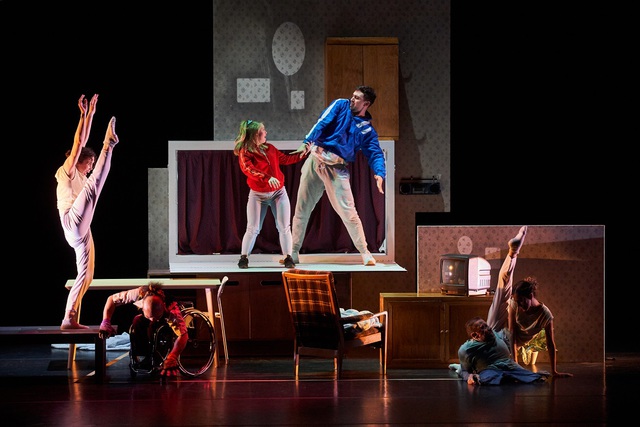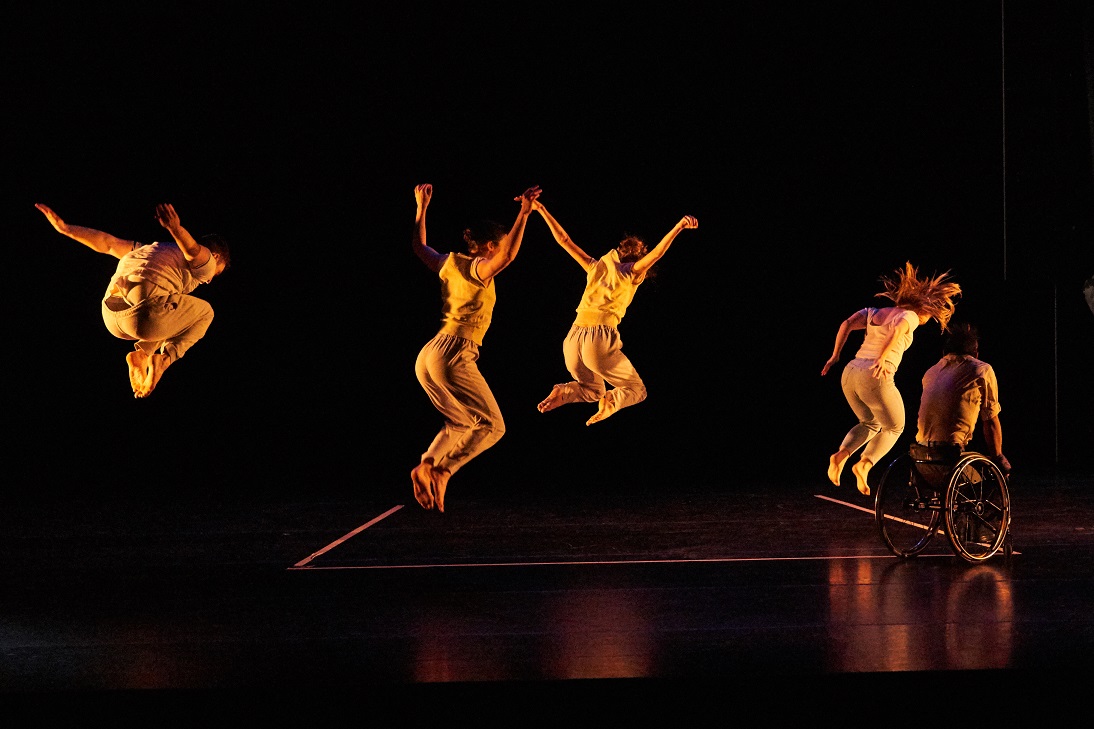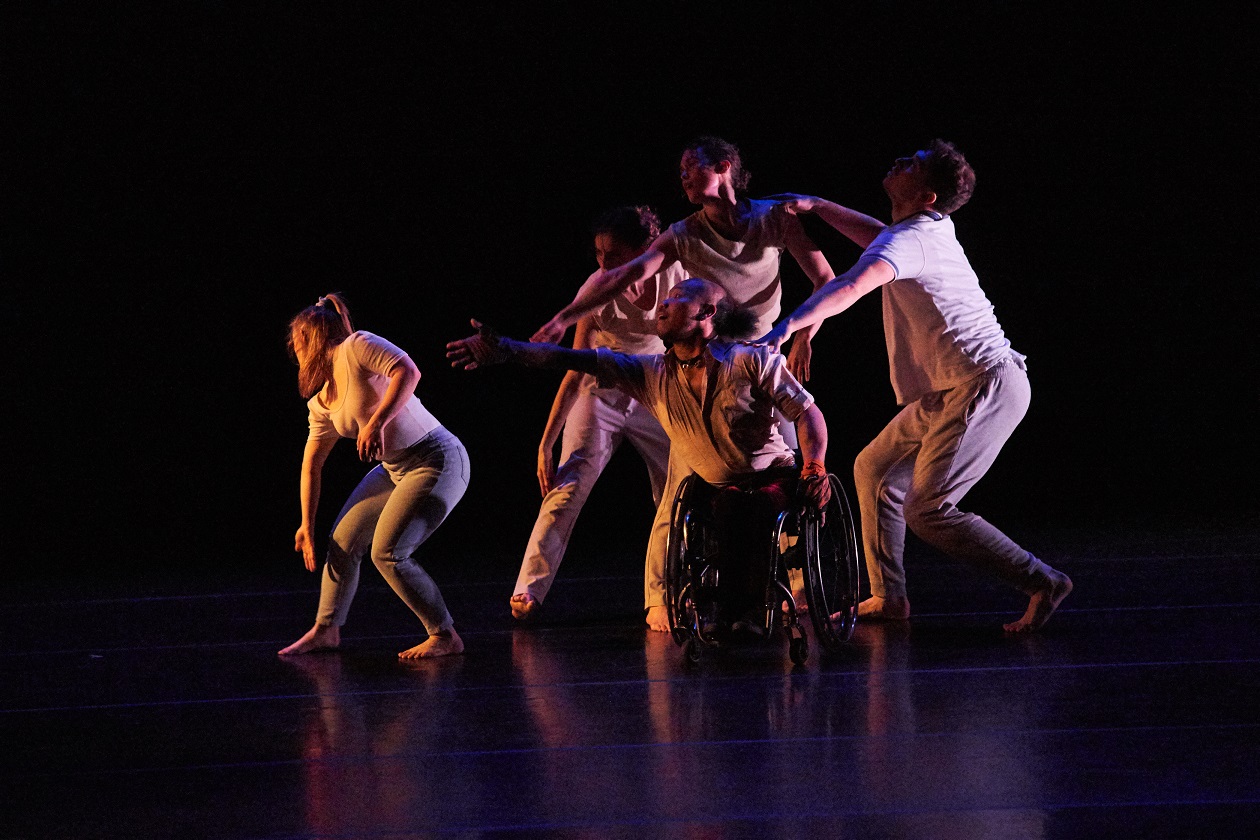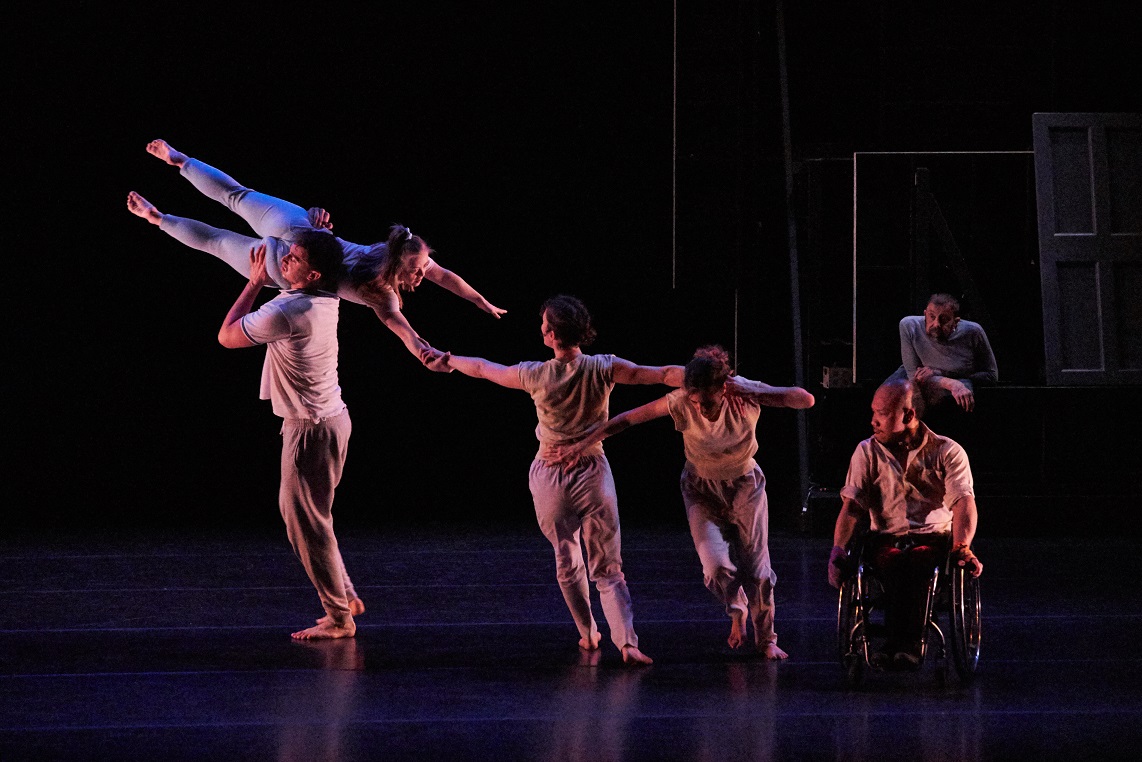A reflection on London 2012 Cultural Programme and the potential for Tokyo 2020

Stopgap Dance Company is an ensemble of disabled and non-disabled artists who create productions for national and international touring. The company’s creative process is informed by the difference that exists between disabled and non-disabled people, but the artists’ inclusive approach enable them to be more open to embracing a wider diversity, and this has significant impact on the company’s productions. For example, the central narrative for ‘The Enormous Room’, which toured to Japan in March through Setagaya Public Theatre, was grief. This is a very difficult and sensitive subject, but having a creative team that had diversity in regards to disability, cultural and socio-economic backgrounds and age enabled the team to have more thorough exploration about how people deal with death from different viewpoints. This gave the production deep sensitivities and the team felt more confident that they gave this difficult subject matter some justice. This creative process was a game changer for Stopgap in many ways. It led the company to become more assured in creating works that explore challenging universal issues that we human beings experience in our lives, and this has certainly made the company’s works more relatable to a wider variety of people.
I think Stopgap’s artistic works now have two types of impact on its audiences. It will first and foremost give them a deeply artistic experience, but the fact that the performance is delivered by a diverse cast will hopefully get the audience reflecting on what a truly diverse and integrated society might look like. Dealing with something like the death of a loved one affects us all, whether you are old or young, rich or poor, white or yellow, disabled or non-disabled. The company’s works will hopefully show its audiences that there are things that unite us in the face of obvious differences. This is how artistic and social ambitions can both be communicated to the general public.

enormousroom @setagaya PT photo Yohta Kataoka
There is some evidence that the industry is starting to recognise Stopgap’s appeal. Aside from the performances with the likes of Setagaya Public Theatre, The Enormous Room has toured to prominent venues and festivals in Europe. It has so far been the company’s most successful production to date. It has however, taken the company over twenty years to get to this stage, and within this history, the award of 2012 Olympic and Paralympic Games to London in 2005 resulted in a significant increase in the company’s pace of progress. The Game’s legacy programme played even more of an important role however. The funders’ and the industry’s commitment to continuing the legacy of 2012 enabled companies like Stopgap to fully mature and begin making proper impact.
The London bidding team had promised to use the 2012 Games to inspire lasting change for the whole nation. The aspiration for change was laid at promoting diversity and inclusion, and the coming of the Paralympic Games (and the fact that UK has the birthplace of the Paralympic Movement) meant that issues surrounding disability and accessibility became one of the key focus points. The bidding team aimed to promote diversity and inclusion across the country by incentivising communities in all corners of UK to organise and participate in celebratory sporting and cultural activities. As part of this ambition, there was an agenda to distribute high quality artistic works by disabled and inclusive arts companies around the country. However, the number of established disability and inclusive arts organisations were comparatively small in the mid 2000s. There were some prominent companies like Candoco Dance and Graeae Theatre, but more organisations like these needed to emerge to deliver decent inclusive arts works in all corners of UK. The cultural funding strategy in UK had historically been hugely supportive of diverse companies, but the awarding of London 2012 gave them an opportunity to increase investment to a wider variety of disabled and inclusive arts companies from 2005 onwards. Stopgap was one of the beneficiaries of these new opportunities.

enormousroom @setagaya PT photo Yohta Kataoka
Stopgap Dance Company was first established as a community group in the late 90s and operated on a very small scale for a good part of a decade. Having started out as a group of amateurs, the original core members pioneered inclusive dance education and creative processes by trial and error. Stopgap had received small levels of project funding from cultural foundations previously, but Arts Council England invited Stopgap to join their portfolio of core funding in 2006, which proved pivotal. This meant that the company’s operational costs became subsidised, enabling us to focus on strategic organisational development. Further funding followed soon after so that we could create more ambitious dance works and tour them far and wide. After becoming core funded in 2006, Stopgap accomplished its first ever UK tour in Spring 2008, and it had completed eleven tours of five different productions by summer 2012. The number of international projects also increased dramatically largely thanks to the British Council.
There were many other artists and companies besides Stopgap that were benefitting from increased opportunities all around the country, and they were all vying for 2012. Summer of that year was a landmark moment – the first edition of Unlimited Festival took place at Southbank Centre, where new works by disabled and inclusive artists were showcased to UK and international audiences, and the ceremonies brought together some prominent disabled performers and companies. The Opening Ceremony was particularly emotive, as it showcased some familiar faces in an once-in-a-lifetime performance. Unlimited Festival and the Ceremonies for the Paralympic Games demonstrated the maturity of disabled and inclusive artists working in UK. It showed worldwide audiences how diversity can be the root of stunning creativity.
As much as 2012 was a fantastic year, I don’t think Stopgap was quite ready to make the most of the opportunities that year had afforded us. As much as the rate of growth for the company was outstanding between 2005 and 2012, the company’s productions were not showcased in Unlimited Festival, and our dancers took part in the Opening Ceremony as freelance artists separate from the company. The pace at which Stopgap developed in those years taught the team many lessons, and all of this rich experience could have gone to waste if London 2012 did not have a Legacy programme. Diversity and inclusion had thankfully become central to Arts Council England’s funding strategy well before 2012, and many companies like Stopgap had already been offered an extension of core funding by the time the Games commenced. Unlimited secured extension of their funding and support beyond 2012 too, and disability and inclusive arts became a long-term priority for the British Council. London 2012’s Legacy Trust was also launched as Spirit of 2012, primarily supporting inclusive arts and sporting projects around the country.

enormousroom @setagaya PT photo Yohta Kataoka
A wide range of organisations committing to the legacy of 2012 meant that companies like Stopgap could continue their development, and the company did not disappoint. The production that Stopgap launched in 2014 (Artificial Things) toured nationally and internationally before becoming a mandatory study for secondary school Dance curriculum in 2016, and I have already elaborated on the success of The Enormous Room. Stopgap’s artist development initiative has also flourished. The company successfully supported Chris Pavia, a choreographer with Down’s syndrome, to create an outdoor production The Awakening, which toured nationally before being presented at Unlimited Festival in 2014, making him the first learning disabled choreographer ever to create a piece for national touring. The company’s apprentice company Sg2 was also established, so that there is a pathway for the next generation of disabled dancers to enter the industry. Spirit of 2012 also supported Stopgap to stage a large-scale outdoor show called The Seafarers at Norfolk and Norwich Festival, which received a 4-star review from The Guardian in 2018.
I have had the opportunity to connect with a number of disabled artists, producers and managers in Japan in the last few years during my time organising Stopgap’s recent tour of the country. There may be relatively fewer established disabled artists and inclusive companies in Japan compared to UK, but I have had the privilege to encounter very talented people. Japan can boast exceptional disabled dance artists like Kazuyo Morita with a great track record in the dance scene with the newcomer Kenta Kambara also coming through. There are also some talented dancers in the integrated dance company Kyo, and there are some intriguing dance works coming out of the innovative arts and social services institution Tampopo-No -Ye, led by the choreographer Shin Sakuma. I also had the opportunity to organise an outreach workshop with Dance Laboratory, who have a group of enthusiastic learning disabled dancers. The disabled arts manager Yoshie Kris from Slow Label is a determined individual and had a hand to play in the handover ceremony for Paralympics from Rio to Tokyo. It showcased disabled performers as who they are and the ceremony played very much to their individual strengths. If they go along the same lines, the Paralympic ceremonies team will create an even better performance. Stopgap also received support from Japan Foundation to organise a choreographic lab with butoh-based artist Yukio Suzuki, who enlightened the Stopgap dancers with the fact that butoh’s starting point is naturally inclusive. It bodes well that a prominent dance form from Japan has a potential to work with disabled performers. These are just some of the people I had the chance to come across, and I am sure there are many more capable artist and companies.
I think Japan as a country has the basis for showcasing exceptional works by disabled artists and inclusive companies already, and I sincerely hope that they will be given their opportunity for Tokyo 2020. But more importantly, I also hope that they will continue to be supported once they prove their worth next year, so that their impact and potential don’t go to waste.



